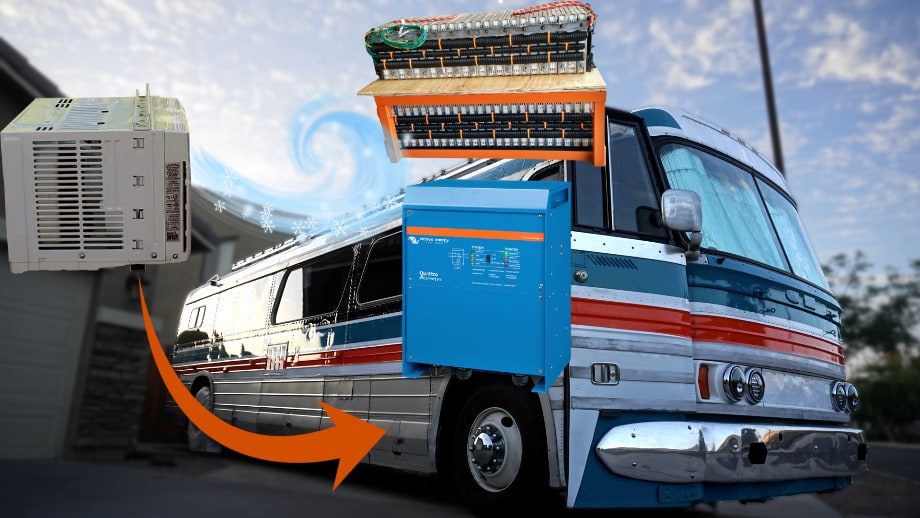When we first started designing our electrical system a big reoccurring problem we had was how to deal with heat. Heat is the number one enemy of lithium batteries and electronics in general. Most electric cars employ very complicated water-cooled solutions to keep heat in check within the batteries. The Victron manual also suggests:

This is emphasized by the fact that we live in Arizona and were building the bus during a time when we were experiencing record heat numbers. My initial thought was to put in some fans and temperature control the speed with a small processor.
I quickly learned that there are quite a few problems with this approach. The first is that blowing hot air into the bay probably is not going to provide much "cooling". Asphalt temperatures in Arizona can reach 180°F! Our electrical bay is very close to the ground so it is easy to see how blowing this hot air with fans would not be very effective for cooling.
The second problem is exposure to outside elements. If you are pulling in air from the outside you are exposing your sensitive electronics to dust and moisture. Dust is the major issue that we deal with out west but rain or excessive humidity can also be bad hard on electronics. You could put a filter on the fan but that is going to reduce the airflow as well as complicate the installation.
The third problem is cost. High-quality fans and controllers will cost more than a small high-efficiency air conditioner and will be far less effective. It may also be necessary to undergo a more complex installation process. Air conditioners, especially small, low-cost apartment-style ones benefit hugely from mass production, making their prices incredibly low. The air conditioner we purchased for our bay was just over $100 and required 1 rectangular shape cut to install it. They are also designed to be a closed system with no external air being needed from the outside.
Heat management was the last piece of the puzzle for our system. In our setup, heat is extracted from the bay and directed to the back of the air conditioner. To eliminate this heat, we sealed off the electronic bay and created a sizable opening in the bay's floor to draw in cool air. We also employed a fan to open the bay door and expel the heat.


Like any air conditioner, ours needs to be serviced regularly to keep performing well. We try to service this air conditioner every time we make it back to Arizona, which happens to be about twice a year for us.
In the video, I demonstrate a straightforward cleaning routine and offer a glimpse into the battery and electronic bay from the driver's side of the bus. It's also an opportune time for us to inspect all of the battery and electrical connections to ensure there are no irregularities. We've been using these Lithium batteries for about five years now, and they have performed exceptionally well. I am hoping for a few more years of good use out of this recycled battery.



Watch the video:
Click here If you cannot see the video.







0 Comments
Comments powered by Disqus